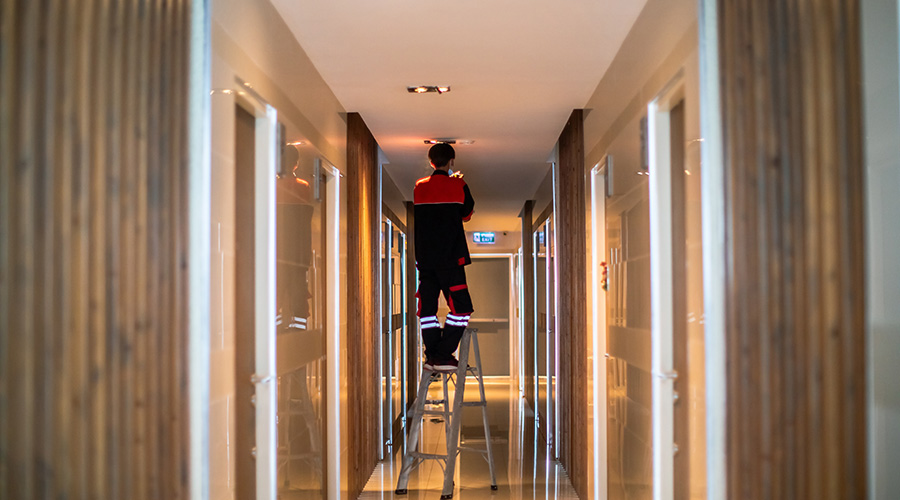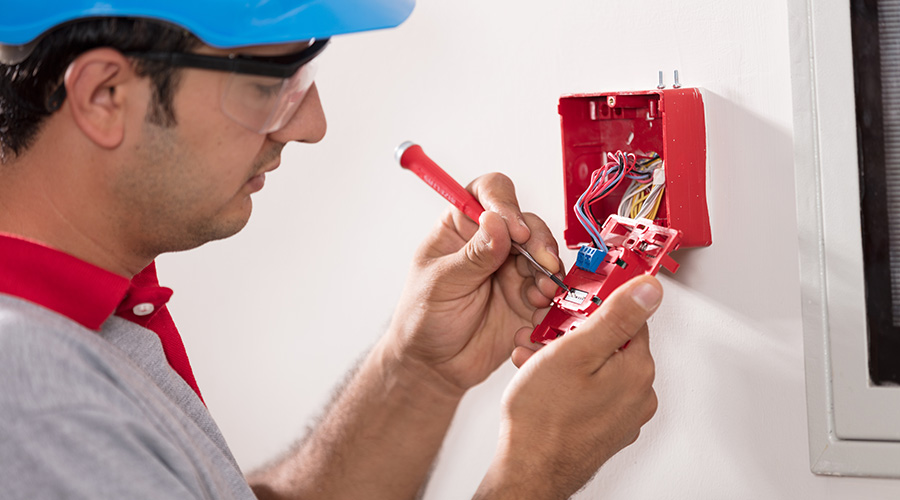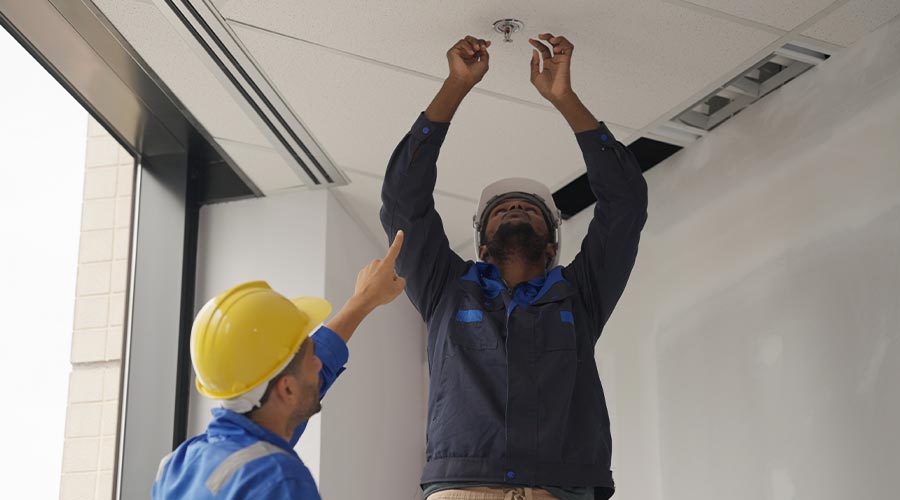The Search for Fire (Safety): Inspections and NFPA 25
OTHER PARTS OF THIS ARTICLEPt. 1: This Page
Note: This is the second part of a two-part article on the inspection and maintenance of fire-safety systems. The first part appeared in February 2014.
Fire safety inspections in institutional and commercial buildings are essential for protecting occupants and facilities. Performed regularly by qualified individuals, inspections can ensure that systems perform as designed in detecting fires, warning occupants and extinguishing the flames.
But to ensure systems' success, managers must answer some challenging questions related to inspection requirements, the role of a third party in the process, and training issues.
In or out?
For many such questions, maintenance and engineering managers need to refer to NFPA 25, Inspection, Testing, and Maintenance of Water-Based Fire Protection Systems. For example, the standard can help managers determine when it is appropriate to bring in a contractor to perform certain inspections and when it is more appropriate to handle inspections in-house.
"We go to NFPA 25 as the bible for sprinkler maintenance," says Christopher Culp, P.E., who is vice president and a fire protection engineer with Henderson Engineers Inc. "NFPA puts all the onus for maintenance on the owner, so managers acting on behalf of owners need to understand that they are wholly responsible, hired help or not.
"It's going to come down to the training level and the experience of each individual facility manager, in my opinion, to know when they need help and how much they need to oversee that work. Most of the contracts you get from a sprinkler contractor will say, 'We're just going to make sure this equipment is working properly.' But they'll specifically exclude anything about design."
In part, the decision will depend on the skills and workloads of in-house inspectors.
"In the experience I have working with different facility managers, they typically have their own staff do weekly inspections, whatever those are, but they'll hire sprinkler contractors for the quarterly and annual (inspections)," Culp says. "The bigger things, like firebox testing, water-storage-tank inspections, the five-year pipe inspection — those are going to be hired out."
Culp also says managers should consider using a third party for fire-safety inspections as a way to avoid possible conflicts of interest and ensure successful compliance.
"One thing we talk about with some of our clients is that it's a good idea to have a third-party person that doesn't benefit directly from the inspection, whether that's another sprinkler contractor or another fire-protection professional or an engineer or somebody like that," Culp says. "By having a third-party, you can tell them, 'You're going to go in and tell me what's wrong, but somebody else is going to do the work.' That way there's no funny business as far as money is concerned."
Culp even advises managers to consider working with local fire departments in planning and carrying out inspections.
"One gentleman on my staff is a fire marshal, and he says that some fire departments will do courtesy inspections of existing systems upon request," he says. "So if somebody is curious and wants to engage the fire department and start a dialogue, most departments are probably willing to do so."
Streamlining the process
Managers' decisions on fire-safety inspections will result in large part on their familiarity with the applicable codes and standards.
"In our line of work, that's NFPA 25," Culp says. "It's important to know what's not covered by the scope of inspections by your hired help. That's probably the most important thing to know is what's not covered. Whoever you have doing that in-house should be technical enough to read the manufacturer's installation, operation and maintenance manual and do some basic troubleshooting. They don't necessarily need to know how to tear down a valve for each component, but it would be good if they could do some of the basics."
Though much of the focus for fire inspections understandably relates to the systems and components that make up fire safety systems, Culp points out one aspect of proper preparation for inspections that managers often overlook — organization.
"The owner is responsible for the maintenance records and proving that their systems have been maintained, so you have to be able to track all the various components in your system," he says.
"You need to know when they have to be tested or observe, and then you have to provide all of the inspection reports for comparison's sake or for the fire marshal upon request. You have to keep those records on site, and it has to be available at all times. If you're not organized, it's going to be a major headache or possibly a fine situation."
Related Topics:











